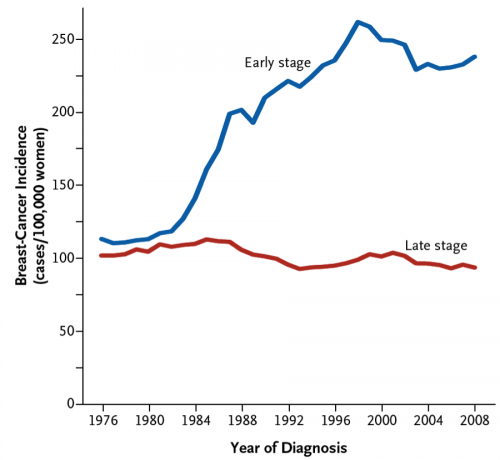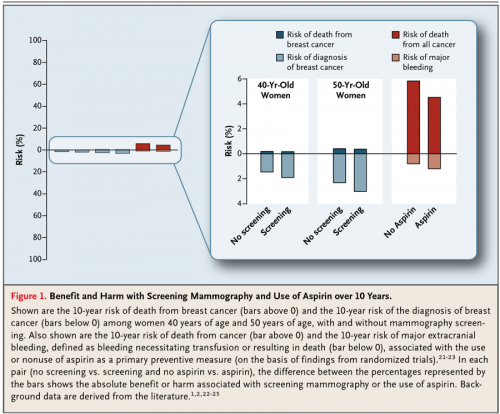Two thoughtful articles in NEJM this week on screening mammography in the US. The results won’t be a surprise to long-time readers here at TIE. From Bleyer & Welch:
We estimated that in 2008, breast cancer was overdiagnosed in more than 70,000 women; this accounted for 31% of all breast cancers diagnosed.
The authors claim that the boom in breast cancer diagnosis since the mid-1980s is largely overdiagnosis of early-stage breast cancer that would not have developed into late-stage breast cancer. Data for US women 40+:
Their conclusion:
Despite substantial increases in the number of cases of early-stage breast cancer detected, screening mammography has only marginally reduced the rate at which women present with advanced cancer. Although it is not certain which women have been affected, the imbalance suggests that there is substantial overdiagnosis, accounting for nearly a third of all newly diagnosed breast cancers, and that screening is having, at best, only a small effect on the rate of death from breast cancer. (emphasis added)
The second article is a Clinical Decisions feature by R.A. Smith et al. The money chart:
Thoughts to ponder:
- If low-dose aspirin is really more effective than screening mammography in reducing cancer deaths generally, why don’t we have a multi-billion dollar aspirin program in US health care, complete with patient advocacy groups demanding access to aspirin?
- Does the answer have something to do with device manufacturers and providers making billions of dollars a year on screening mammography?
- Are patients simply too enamored with high-tech solutions?
- Would it help if we renamed aspirin “Tamoxalox” and charged $500 a year?
@koutterson


